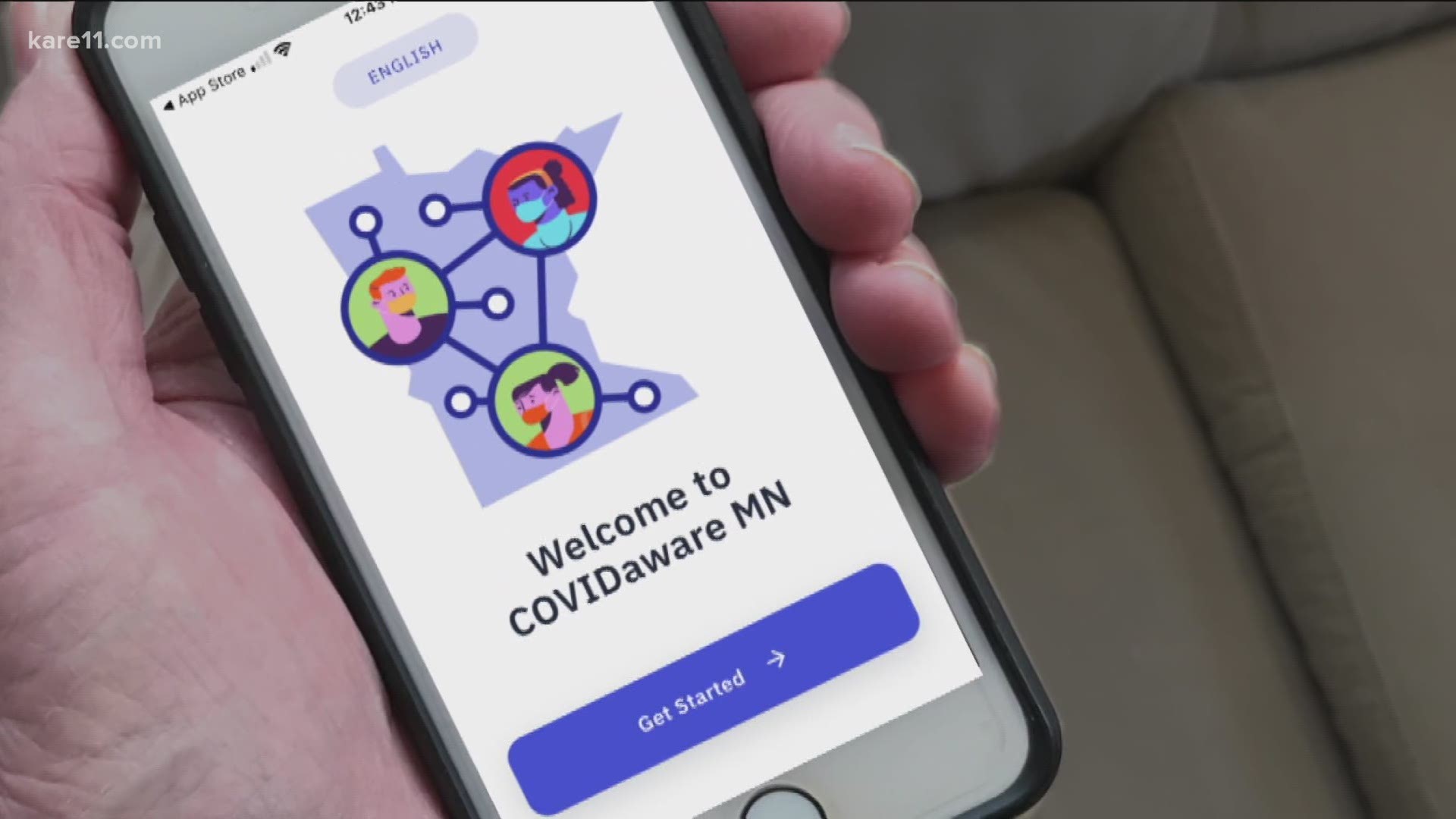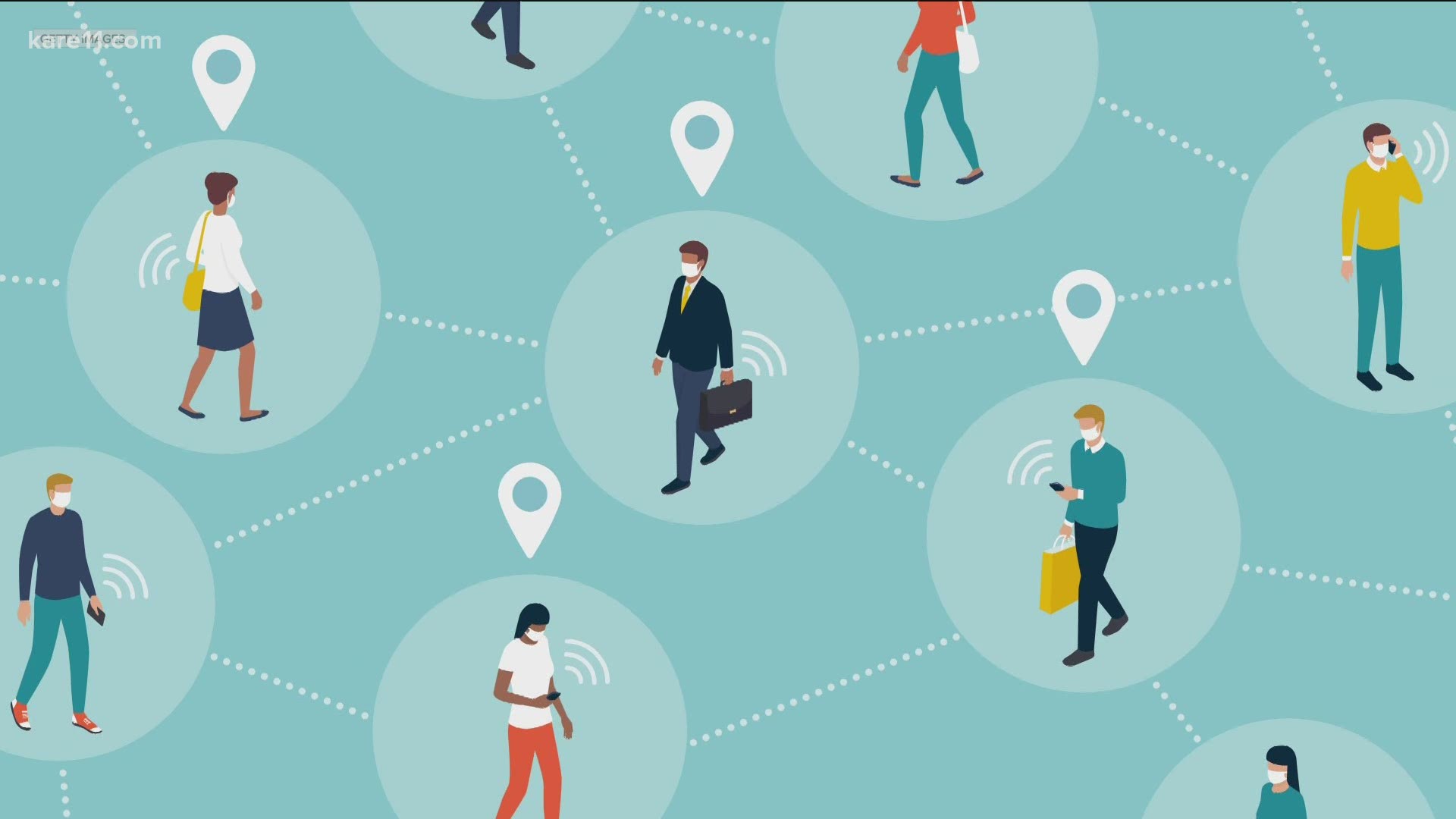ST PAUL, Minn. — The state of Minnesota has released a new app to alert people if they've been exposed to someone with COVID-19.
Governor Tim Walz spoke Monday about the new technology he says will help Minnesota slow the spread of the virus. He's asking all Minnesotans to download the app in the Google Play Store or Apple App Store.
At a news conference at 12:30 p.m., Walz was joined by public health official Kris Ehresmann and Minnesota IT Services Commissioner Tarek Tomes.
"COVID is not going to end at the end of the month," Walz said. "We are in an unrelenting spike."
The Minnesota COVID-19 exposure notification app is called COVIDaware MN. Walz called it another tool in the state's toolbox to fight COVID-19. He said the need for the app is partially driven by asymptomatic spread, especially by younger adults who don't know they are carrying the virus.
"One of the best ways is for people to know if they've been exposed to COVID-19," Walz said. "They can then be informed to take all of the proper precautions ... to be able to break the chain of spread."
The free app uses exposure notification technology developed by Apple and Google. According to its description in the App Store, it exchanges anonymous Bluetooth keys with other app users when you're within 6 feet of each other. The app was built with open-source software from PathCheck Foundation, a nonprofit founded at Massachusetts Institute of Technology, according to Walz.
The app's description emphasizes privacy, stating that no information from your use of the app can be traced back to you. Walz said it's being used by about 20 other states.
If you test positive for COVID-19, the Minnesota Department of Health (MDH) will give you a unique code. If you enter the code into the app, other users who were recently near you will be anonymously notified. A notification will only be sent if the person was within 6 feet of you for 15 minutes or more in a 24-hour period, in the 14 days leading up to the positive test.
Governor Walz said he has already opted into the app.
"There is no data tracking, there is no data collecting, there is no data sent to the Minnesota Department of Health, nor to Google, nor to Apple," Walz said.
While the governor clarified that the app is voluntary and no one has to use it, he said, "I would strongly encourage if not beg you, please do so."
Minnesota IT Services Commissioner Tarek Tomes said the app will bring mobile phones into the fight against COVID-19, and called the Google-Apple partnership behind it "groundbreaking."
"The more people that use it, the better it works," he said. "Slowing the spread of COVID-19 is a community effort. ... Notifying friends, neighbors or people we may not know of a potential exposure to COVID-19 is essential to slowing the spread of this virus. Doing that is often difficult."
Tomes said the app does not track your GPS location, and it doesn't access your identity or personal information. Downloading the app is voluntary, and a user also has to opt into sharing information once they have the app.
"When someone tests positive, they have the choice ... of using the app to warn others," Tomes said. A code is provided to that person, which they can plug into the app. Then anyone who has been in proximity receives an alert.
"When you receive this notification, at no point in time does it tell you who triggered the notification," Tomes said.
He said it only gives a broad time period, for example, "within the last three days." The app does not tell you where the exposure took place.
MDH Infectious Disease Director Kris Ehresmann said if you get an exposure notification and don't have symptoms, you should quarantine for 14 days. If you do have symptoms, you should be tested.
The app will also give you guidelines on when you should be tested.
Will an app have an impact?
Minnesota joins a growing list of states and territories in adopting the app, but it's still hard to know the impact the COVIDaware technology might have on slowing the spread of COVID-19.
For months, Jeffrey Kahn, Director of the Johns Hopkins Berman Institute of Bioethics, has been studying the technology, it's ethical implications and its potential impact in the fight against COVID.
"We're trying to work with states to assess performance and answer questions like, how well is it working and how do we know that it's working?" Kahn said. "It's too early to answer those questions, so the short answer is we don't know yet. The longer answer is we're working on it and we'll continue to work on it in the coming weeks and months."
Kahn says the more people who use the technology, the more effective it would be in helping people track their exposure, but he says that doesn't mean that a certain percentage of the population needs to download it in order for it to work at all.
"We don't yet know, how many people within a community it will take to have actually have a big public health effect, we're trying to study that," he said. "But I think the more people who adopt it, the better off we'll be in terms of learning how well it works and also trying to blunt this pandemic.
"And certainly, it's all a bridge to getting us to a vaccinated population where we're all protected and can go back to whatever our normal lives look like," Kahn said.
Walz encouraged Minnesotans that vaccines are on the horizon and there is hope, but the toughest part of the pandemic is still upon us.
"Let's break the spread of this as we move forward," Walz said. "We can't let our guard down, we can't put people at risk when we know there are things we can do to make a difference."
This isn't the first COVID exposure notification app available in Minnesota, but it is the first one managed by the state's public health officials. Earlier in the pandemic, HealthPartners worked with U of M and Modern Logic to create SafeDistance, which tracks outbreaks by neighborhood.


